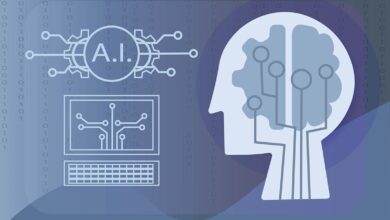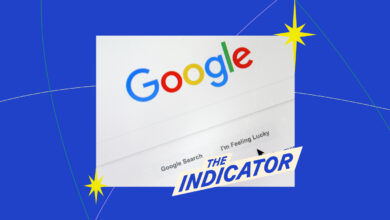AI is catching up with humans, 52% more concerned than excited: Stanford | Technology News

Each year, Stanford publishes its annual Artificial Intelligence Index report to assess the developments in the domain. 10 years ago AI systems were not capable of classifying images or even producing text. Back then they struggled to comprehend language, grappled with visual reasoning, and failed some basic tests. However, today they have progressed leaps and bounds as most models have exceeded human performance on some standard benchmarks.
The latest report reveals how AI is catching up to humans, surpassing several benchmarks, how professionals are adopting AI tools to improve efficiency, the government’s take on regulation, etc. In this article, we will explore the key takeaways from the high-stakes report published by Stanford University’s Human-Centred Artificial Intelligence.
AI overtakes humans on some tasks:

The report states that AI has surpassed human performance on several key benchmarks including visual reasoning, image classification, and understanding of English. However, the report also claims that AI trails behind in some complex tasks such as competition-level mathematics, planning, and visual commonsense reasoning.
Lack of robust and standardised evaluations for LLMs:
When it comes to benchmarks, reportedly there seems to be no consistent way of measuring the capabilities of AI models. This leads to multiple AI companies claiming that they have the fastest or most accurate LLM. The report highlights how without a single, standardised framework for assessing performance, it is hard to judge whose model is at the top.
AI research continues to dominate:
In 2023, the AI industry produced 51 notable machine learning models while academia created 15. Similarly, there were 21 notable models that led to industry-academia collaborations in 2023.
Frontier models get expensive:
Based on the AI Index estimates, the training cost of state-of-the-art AI models has reached unprecedented levels. For instance, OpenAI’s GPT-4 reportedly used around $ 78 million worth of compute to train while Google’s Gemini Ultra cost around $191 million for compute.
The US, China lead AI race:
The report states that the US, China, the EU, and the UK lead the race with top AI models. In 2023, as many as 61 notable AI models came from US-based companies, 21 from the EU, and 15 from China. Between 2021 and 2022, AI patent grants worldwide increased by 62.7 per cent. It needs to be noted that since 2010, the number of granted AI patents has increased over 31 times. It seems China is dominating AI patents, as the country led global AI patent origins with 61.1 per cent, outpacing the US with 20.9 per cent of AI patent origins. Since 2010, the share of the US in AI patents has reduced from 54.1 per cent.
Investments in Generative AI skyrocket:
The reports stated that despite a decrease in AI private investment in 2023, the funding in Gen AI rose significantly to reach $25.2 billion. Major players in the generative AI space, including OpenAI, Hugging Gace, Anthropic, and Inflection, have been reported to have raised significant funding.
Workers use AI to enhance productivity:
According to the report, AI is making workers more productive and enhancing the quality of work. In 2023, numerous reports asserted that AI enabled workers to complete tasks quickly and efficiently. “These studies also demonstrated AI’s potential to bridge the skill gap between low- and high-skilled workers. Still, other studies caution that using AI without proper oversight can lead to diminished performance,” the report read.
AI accelerates scientific progress:
While in 2022, AI began advancing scientific discovery, in 2023 the world witnessed the launch of some significant science-related AI applications. These applications include AlphaDev which makes algorithmic sorting more efficient, GNoME which facilitates the process of material discovery.
Rising AI regulations in the US:
The report states that AI-related regulations in the US have seen a steep rise in the last five years. While in 2016 there was only one AI-related regulation, in 2023 the number rose to 25. In 2023, the total number of AI-related regulations grew by 56.3%.
People are more aware of AI’s impact:
A survey cited in the report showed that over the last year, the proportion of those who think AI will dramatically affect their lives in the next three to five years has increased from 60 per cent to 66 per cent. The report also stated that 52 per cent expressed nervousness towards AI products and services, an increase of 13 per cent point since 2022. Based on Pew data, in America, 52 per cent feel more concerned than excited about AI, compared to 37 per cent in 2022.
The research and development in AI is going on at a brisk pace. While AI companies and many others are increasingly integrating AI technologies into their products and services, a large swathe of people around the world are still unaware of the merits of AI. Even as companies continue to race to build the most efficient AI model, the absence of a standard benchmark to evaluate prompts them to make big claims.




